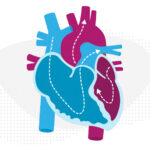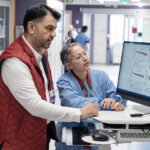Unique data revealed just when Mickey’s heart doctors could operate
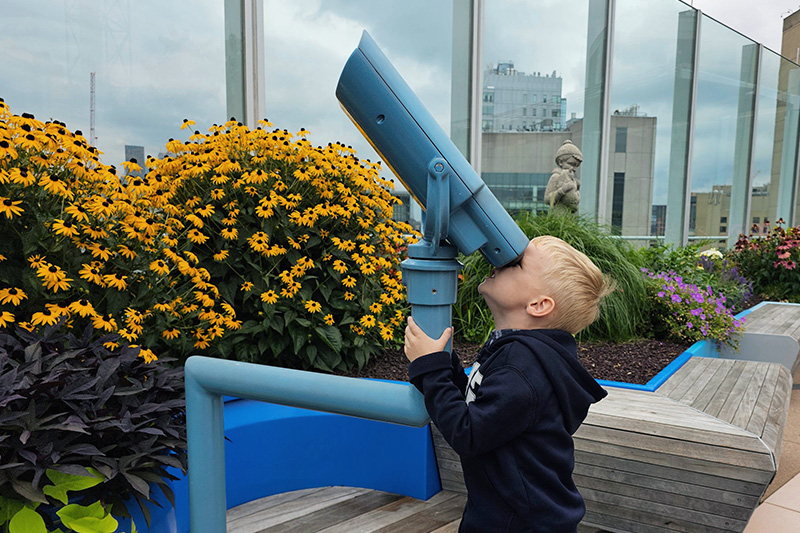
When Mikolaj “Mickey” Karski’s family traveled from Poland to Boston to get him heart care, they weren’t thinking about pressure-volume (PV) loops.
His parents simply wanted him to receive treatment for a complex condition that he couldn’t get back home. Little did they know the mathematical computational power of those PV loops would play a large role in doing just that.
PV loops are an analytical tool that measures pressure and volume in the heart’s chambers to compute metrics of the heart’s function and workload. Estimates of Mickey’s heart function in an improved heart anatomy helped his Boston Children’s care team understand when the 5-year-old would be ready for surgery. Those numbers gave Mickey’s weakened left ventricle extra time to get stronger for the operation that has given him optimal heart health. The data also let his parents know they were on the right path.
“We knew we were in a good place,” his father, Wiktor, says.
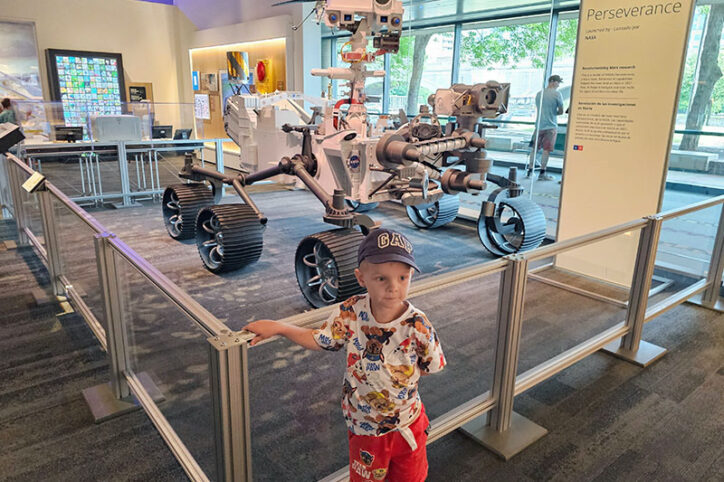
Searching for treatment for a complex condition
Mickey was born with congenitally corrected transposition of the great arteries (CC-TGA), a rare condition in which the heart’s ventricles and its two main arteries are in reverse positions. He also had a small ventricular septal defect (VSD), a hole in the wall that separates the heart’s two chambers, and a condition that affected how blood exited his left ventricle.
Doctors in Poland didn’t have experience with the surgery that corrects CC-TGA. Specialists at a clinic in Switzerland recommended not immediately having that surgery but said they would treat the other conditions. It was then that Wiktor and his wife, Magdalena, heard about Boston Children’s Benderson Family Heart Center.
Cardiac surgeon Dr. Pedro del Nido and cardiologist Dr. David Schidlow reviewed Mickey’s case and said he was a candidate for the surgery: a type of biventricular repair known as the “double-switch.” The procedure switches the two main arteries and ventricles into their normal positions. Dr. del Nido is a pioneer for helping develop biventricular repair and finding new ways for the procedure to treat complex conditions such as CC-TGA. Wiktor and Magdalena were thrilled he would operate on Mickey, but they had to wait. Mickey’s left ventricle wasn’t ready.
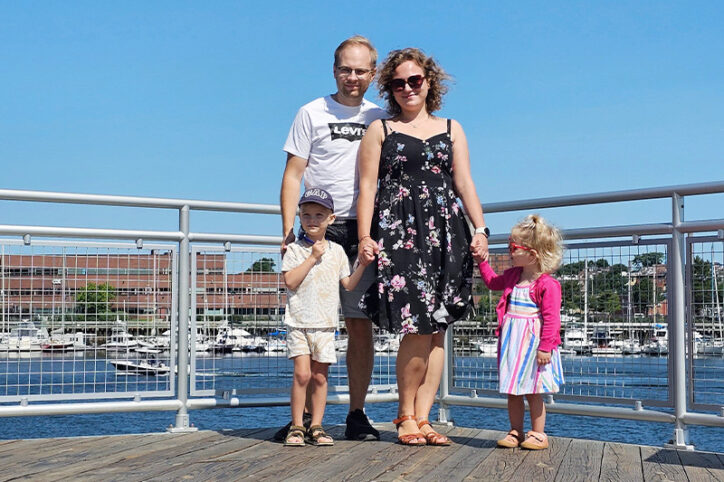
Analytics predicted Mickey’s heart workload
When Mickey and his family came to Boston Children’s in 2023, tests showed his left ventricle, which is the main pumping chamber in a normal heart anatomy, was weakened by being passive in the opposite position. It had a lesser workload pumping blood to the low-pressure lung circulation and wasn’t strong enough for the double-switch.
That’s where the PV loops came into play. Developed by cardiologist Dr. Nikhil Thatte around the time Mickey arrived in Boston, the analytical tool predicts what the workload on the ventricle will be after a double-switch procedure to repair CC-TGA.
No such model had previously existed but having that insight before surgery is critical. Some left ventricles can’t handle the sudden workload of pumping oxygen throughout the body. By running calculations of Mickey’s ventricular function, Dr. Thatte saw that his left ventricle could get stronger from “training” before surgery. To train the ventricle, Dr. Thatte placed a stent in his heart to create a volume load, while Dr. del Nido placed a band on the pulmonary artery to create a pressure load on the ventricle — steps to prepare it for the eventual change in circulation. “We sent the ventricle to ‘the gym,’” Dr. Thatte says.
Mickey and his family returned to Boston six months later, “feeling sure he could have the double-switch,” Wiktor recalls. But the PV loops showed the left ventricle still needed time to strengthen. A third trip to Boston was the charm: Mickey’s ventricle was finally ready. Dr. del Nido and his team performed the double-switch and treated the other heart conditions.

Mickey has good health and memories of Boston
Mickey had never shown signs of illness, but his parents did not want him to live with a condition that could later cause severe health issues. It’s a decision many families struggle to make: Let their child have surgery now or later. Even though Wiktor and Magdalena occasionally felt stressed about the decision, they mostly remained “calm” because they were able to trust Dr. del Nido’s expertise and the hard data of the PV loops.
“We asked Dr. del Nido if this was risky surgery,” Magdalena says. “He told us it was routine surgery for him.” And after Dr. Thatte explained to the family how PV loops work and what they try to achieve, “we trusted him calculating what the limits of Mickey’s ventricle would be and when he would be on the safe side,” Viktor recalls.
Dr. Thatte joins Drs. del Nido and Schidlow on the family’s list of favorite doctors. Mickey, for that matter, remembers the names of everyone who cared for him. The kind and thoughtful way that doctors, nurses, and other team members managed Mickey’s care made it a comfortable experience, his parents say. “That was a big thing for him and his younger sister, Helena,” Wiktor says. “They remember the good things. They keep asking us when we are going back to America and Boston.”
The family is happy to be home in Warsaw, though. There, Mickey plays with Helena, who has long been supportive of her brother and takes time to show him the things she’s learning in kindergarten. Mickey himself loves to read books about science. He also enjoys riding his bicycle and is enthusiastic about starting a swimming class.
“We are happy he had the surgery,” Magdalena says. “We are now back to our normal, happy lives.”
Learn more about the Complex Biventricular Repair Program or request a second opinion.
Related Posts :
-

It's all in the PV loops: New analytical model could improve circulation assessments before heart surgery
The double-switch operation corrects the congenital reversal of the heart’s ventricles and its two main arteries. It’...
-

Twenty years after a groundbreaking biventricular repair, Faith gives back by helping children with CHD
Faith Brackett doesn’t remember every detail of the time she was among the first children to have a new ...
-

Past patient outcomes could help single-ventricle surgery decisions
When considering whether a child who has a single-ventricle heart defect would benefit more from biventricular repair&...
-

Every heart has a story. See how we care for them all.
It’s easy to think of the heart as a common denominator — everyone has one — but no two hearts are ...


